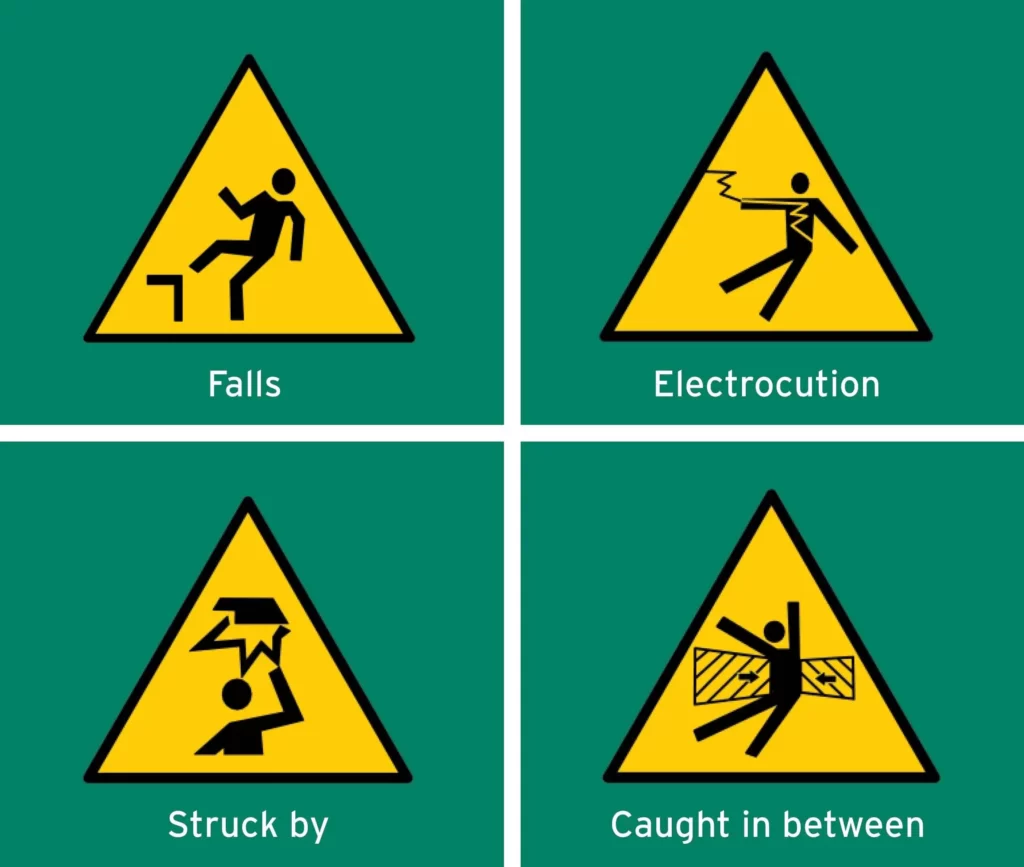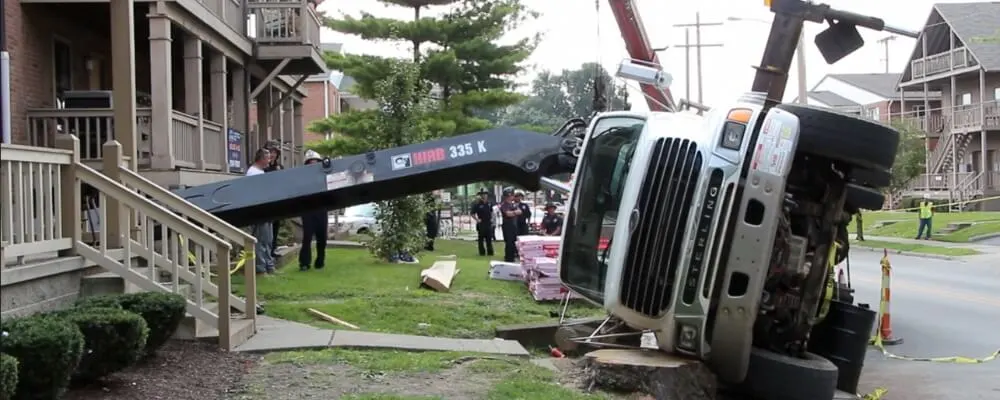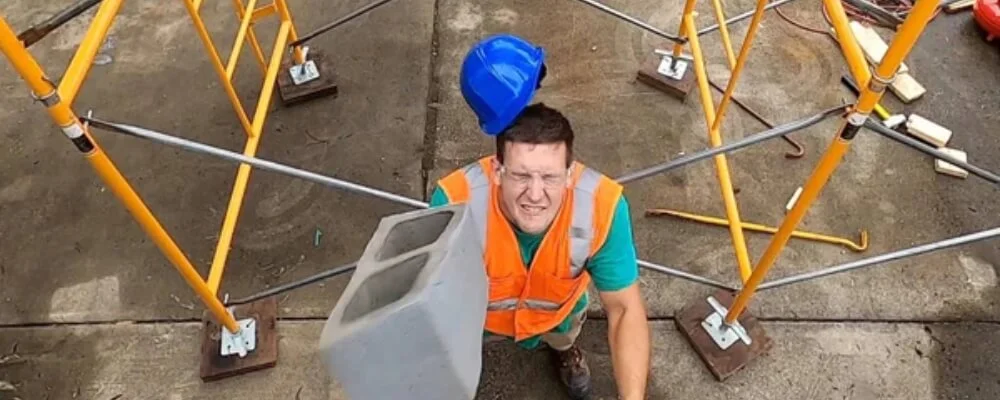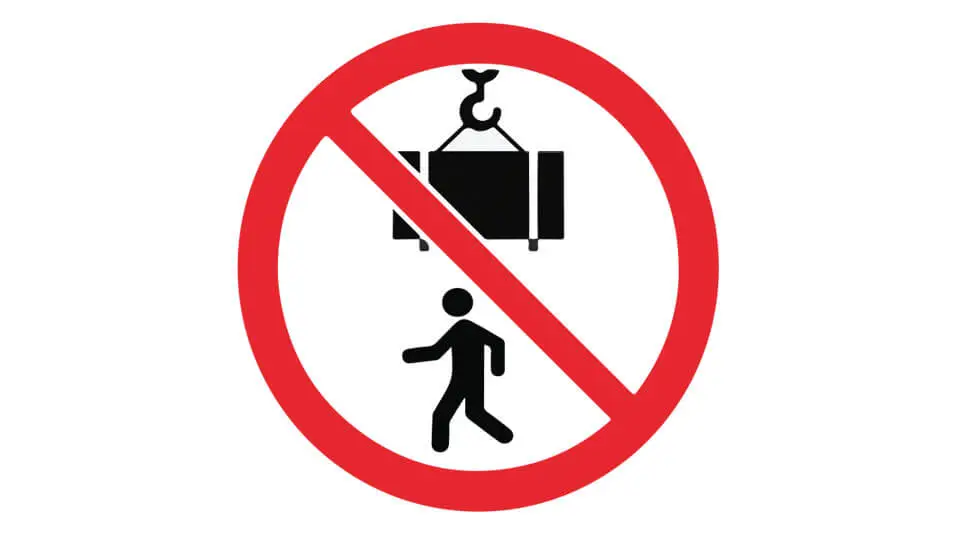In the dynamic workplace environment, ensuring every individual’s safety is paramount. Hazards lurk in various forms, from the humming corridors of bustling warehouses to the bustling activity on construction sites. One such hazard that often gets overlooked, despite its potential severity, is the “struck-by” hazard. It’s a term that safety professionals know all too well, yet many workers remain unaware of its implications until it’s too late.
This blog aims to demystify what struck-by hazards are, offer real-world examples to illustrate their potential danger and provide actionable prevention tips. By understanding and recognizing these risks, employers, and employees can create a safer, more productive work environment. Dive in to become more safety-conscious and proactive in preventing these workplace incidents.
What is Struck By Hazards?
“Struck-by hazards” refer to potential dangers in the workplace where a worker is at risk of being hit by an object, tool, or equipment. It is one of the leading hazards in many industries, especially in construction.
Specifically, a struck-by incident happens when the force of an object impacts a worker with harmful or even deadly results. This could be due to an object moving, falling, swinging, rolling, or flying.
There are four primary categories of struck-by hazards:
- Struck-by-Flying Object: This occurs when an object is propelled or flung, often under force, posing a risk to workers. Examples include a nail being discharged from a nail gun or a piece of material breaking off a power tool.
- Struck-by Falling Object: This hazard occurs when an object falls from a height or an elevated location, such as a tool dropped from scaffolding or materials falling from a shelf.
- Struck-by Swinging Object: This hazard pertains to objects free to swing by force. For instance, a crane lifts a load, swings, and hits a worker.
- Struck-by-Rolling Object occurs when an object moves or rolls on the same level as the worker, typically involving vehicles or equipment. For example, a worker is hit by a moving vehicle or machinery on the ground level.
Workers and employers must recognize and understand these hazards to implement preventive measures and maintain a safe working environment.

Different Examples Of Struck By Hazards
Struck-by hazards are pervasive in many workplaces, especially in construction, manufacturing, and forestry. Here are different examples across the four primary categories of struck-by hazards:
Struck-by Flying Object Hazards:
- A nail shot from a malfunctioning nail gun.
- A broken piece flying off from machinery or equipment, like a shattered grinding wheel.
- Metal shards or wood splinters are produced while cutting or grinding.
- Objects propelled under pressure, like from a compressed air hose.
- Debris ejected from lawnmowers or other landscaping equipment.
Struck-by Falling Object Hazards:
- Tools or materials dropped from a height, like a wrench falling from scaffolding or a beam from a crane.
- Unsecured items fall from shelves or storage areas during an earthquake or because of other vibrations.
- Roofing materials or bricks tumbling from an elevated construction site.
- Tree branches or limbs falling during trimming operations.
Struck-by Swinging Object Hazards:
- A load on a crane swings out of control due to high winds or improper handling.
- Materials hanging from a hoist or pulley system that swing into a worker’s path.
- The boom of heavy machinery swinging unexpectedly.
- A tree or large branch swinging down unexpectedly after being partially cut.
Struck-by Rolling Object Hazards:
- Being hit by a vehicle, such as a forklift, truck, or bulldozer, especially in reverse motion.
- Objects like barrels or cylinders roll off a transport or storage platform.
- Uncontrolled movement of heavy machinery or vehicles on sloped surfaces.
- Rockslides or other debris flow, especially in mining or road construction areas.
In addition to these specific scenarios, there are countless other situations where workers can be exposed to struck-by hazards. Proper training, awareness, and preventive measures are crucial in minimizing the risks associated with these hazards.

How to Prevent Struck-by Hazards
Preventing struck-by hazards involves a combination of administrative controls, engineering controls, personal protective equipment (PPE), and continuous training. Here are measures to mitigate and prevent struck-by incidents:
1. Training and Education:
Every workplace should prioritize the continuous training and education of its workers. When employees are knowledgeable about the safe operation of tools and machinery, the risk of accidents decreases. Regular safety meetings, commonly called “toolbox talks,” are essential to keep everyone updated about potential hazards specific to their tasks or the site they’re working on. These meetings are a platform to discuss best practices, review accident reports, and brainstorm preventative measures.
2. Personal Protective Equipment (PPE):
PPE acts as a barrier between the worker and the hazard. Hard hats are crucial on construction sites or any work environment with a risk of falling objects. Safety goggles or face shields protect eyes from flying particles or debris, which can be ejected from machinery or tasks like grinding or sawing. High-visibility clothing ensures workers are easily spotted, reducing the chances of accidents, especially in proximity to moving vehicles or heavy equipment.
3. Worksite Assessment:
A Proactive workplace evaluation can reveal potential hazards before they become actual threats. Regular inspections ensure that work areas, machinery, and tools are in good shape. By identifying and rectifying risks timely, many struck-by incidents can be prevented. Also, the functionality and maintenance of all equipment should be regularly checked to ensure their safe operation.
4. Secure Tools and Equipment:
When working at heights, tools can easily fall and pose a risk to those below. Tool lanyards can tether tools to workers, preventing these accidents. Moreover, materials and tools should be securely placed on elevated surfaces to prevent them from toppling over. For added security, toe boards, screens, or edge protection can be used. Additionally, materials, especially heavy ones, should be stored at ground level whenever possible.
5. Safety Protocols for Machinery and Vehicles:
Heavy machinery and vehicles pose significant struck-by risks, especially in crowded or congested areas. Using spotters or signal persons can help guide equipment operators and prevent accidents. Modern vehicles can also be equipped with backup alarms and cameras to alert and show operators any obstructions or personnel behind them. Safe zones can be established to clearly delineate vehicle and pedestrian traffic areas, reducing interactions and possible collisions.

6. Falling Object Protection:
Falling objects are a constant concern, especially in multi-level work environments. Protective measures like debris nets, catch platforms, or canopies can shield workers below from falling objects. Moreover, when tasks are carried out overhead, the area directly below should be restricted to prevent unintended injuries.
7. Controlled Access:
To safeguard workers, it’s essential to limit access to high-risk areas. Barricades or caution tape can demarcate these zones, ensuring only authorized personnel enter. Warning signs can further inform of potential dangers, ensuring that even visitors or new hires are aware.
8. Proper Stacking and Storage:
Incorrectly stacked materials can easily become unstable and fall, posing a hazard. Ensuring materials are stacked securely and items are stored in easily accessible ways reduces the risk of them becoming struck-by hazards.
9. Preventive Maintenance:
Tools and equipment degrade over time. Regular inspections can identify wear and tear, ensuring that they function safely. When tools or equipment become damaged or malfunction, they should be replaced immediately to prevent accidents.
10. Weather Considerations:
Weather conditions, especially windy days, can exacerbate struck-by hazards. Extra caution is essential when lifting or moving large objects during windy conditions. During extreme weather conditions, suspending certain operations that pose increased risks may be best.
11. Communication:
Clear communication is a linchpin of safety, particularly when heavy machinery is operational. Whether using horns, alarms, or hand signals, having a robust communication system ensures all workers are aware of ongoing activities and potential hazards.
12. Limit Overhead Work:
Overhead work is inherently risky, primarily when performed above pedestrian pathways or work zones. Minimizing overhead work or scheduling it when fewer people are below can significantly reduce struck-by hazards.
By diligently and consistently applying these measures, fostering a safety-conscious culture becomes inherent, and the risks associated with struck-by hazards can be considerably minimized.

Different Causes Of Struck By Injuries at Workplace
Struck-by injuries at the workplace occur when an employee is forcibly hit by an object, tool, or piece of equipment. Various scenarios and reasons can lead to these injuries, depending on the nature of the work environment. Here are different causes of struck-by injuries:
- Falling Objects: In construction or warehouse environments, items not securely stored on shelves or overhead platforms can fall, potentially striking workers below. This is particularly common in multi-level construction sites where tools or materials might be dropped from an elevated position.
- Vehicle Incidents: Workers can be struck by moving vehicles, especially when vehicles share space with pedestrians, like warehouses, construction sites, or docks. This includes forklifts, trucks, and other heavy machinery.
- Equipment Malfunction: Malfunctioning Tools and machinery can eject parts or materials at high velocity. For instance, a blade that breaks off a cutting machine or a nail misfired from a nail gun can cause struck-by injuries.
- Flying Debris: Certain operations, such as grinding, drilling, or sawing, can propel particles, fragments, or chips at high speeds, potentially striking and injuring workers.
- Swinging or Slipping Equipment: Objects being mechanically moved or lifted, like cranes moving heavy loads, can swing out of control if not properly secured, hitting nearby workers.
- Unstable Stacked Materials: Poorly stacked materials, such as lumber, bricks, or pipes, can tip over and strike workers, especially if these materials are stored at a height.
- Projectile Operations: Tasks that involve propelling objects, such as using explosive-actuated tools or certain types of machinery, can inadvertently launch projectiles.
- Human Error: Accidents can occur from simple mistakes, like not securing a tool properly, dropping materials, or mishandling equipment.
- Lack of Protective Barriers: In areas with the potential for flying or falling objects, the absence of protective barriers like nets, screens, or shields can increase the risk of struck-by injuries.
- Poor Visibility: Inadequate lighting or obstructed views can make seeing hazards or moving equipment challenging, leading to struck-by incidents. This is particularly relevant in outdoor work environments during foggy or nighttime operations.
- Lack of Training: Workers who aren’t adequately trained to use machinery or tools safely, or those unaware of the potential hazards in their environment, are more susceptible to struck-by injuries.
- Improper Personal Protective Equipment (PPE): Not wearing the appropriate PPE, such as hard hats, safety glasses, or high-visibility vests, can increase the risk and severity of injuries.
- Weather Conditions: Environmental factors, such as strong winds, can knock over equipment or materials, leading to struck-by incidents.
Addressing these causes through training, continuous assessment of workplace conditions, use of PPE, and adherence to safety protocols can significantly reduce the risk of struck-by injuries at the workplace.
Conclusion
Workplace safety is vast and multifaceted, with “struck-by” hazards presenting one of the most prevalent challenges. As we’ve explored, these hazards are not just confined to the stereotypical falling object but manifest in many ways — from rogue vehicles on construction sites to errant tools in workshops. Awareness is the first step toward prevention. Equipped with knowledge about these hazards and how they can occur, employers and employees can take proactive measures to mitigate risks.
By integrating the prevention tips discussed, fostering open communication, and prioritizing safety training, we can significantly reduce the occurrence of these incidents. Remember, a safer workplace is not just an employer’s responsibility; it’s a collective effort. Stay safe, stay informed, and work together to ensure every worker returns home without harm.

